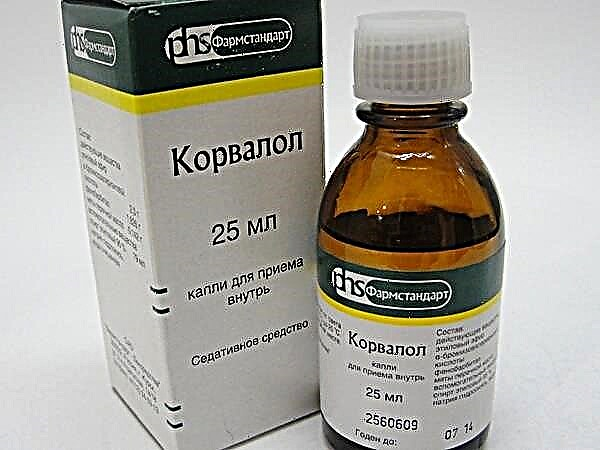
In case of digestive disorders and problems with the intestinal microflora, the child is prescribed various medications, one of which is prebiotics. How do they affect the child's body, why are they used and what are they?
What is it?
The word "prebiotics" refers to various substances that, when released into the large intestine, create conditions that are favorable for normal intestinal microflora. They are not digested in the upper GI tract. Such substances are found in many food products, and are also produced by the pharmaceutical industry in the form of drugs (in drops, tablets and other forms).

Prebiotic substances include:
- Inulin;
- Lactulose;
- Fiber (dietary fiber);
- Pectin and Dextrin;
- Lactitol;
- PABK;
- Calcium pantothenate;
- Galacto-oligosaccharides;
- Chitosan;
- Glutathione, carotenoids, selenium, ubiquinone;
- Sorbitol and Xylitol;
- Raffinose and other substances.
In the video, Dr. Komarovsky will talk about the difference between probiotics and prebiotics, as well as their useful functions.
Indications for use
The main indication for the use of prebiotics is intestinal dysbiosis. Such substances are prescribed for constipation, diarrhea, bloating, chronic bowel disease, food poisoning, as well as after antibiotic therapy.

In addition, prebiotic substances are recommended to be taken with:
- Hepatic encephalopathy;
- Bowel cancer;
- Hemorrhoids
- Acute infections;
- Fatty degeneration of the liver.
They are also prescribed prophylactically to prevent constipation and systemic infections.
Contraindications
- Hypersensitivity.
- Bowel obstruction.
- Galactosemia.
- Suspicion of appendicitis.
- The presence of blood in the stool.
Prescribing prebiotic drugs for diabetes mellitus should be done very carefully.

Possible side effects
Due to the intake of prebiotics, an osmotic effect may appear in the liver. Disruptions in the functioning of enzymes in the large intestine also occur.
Colic, diarrhea and flatulence are a side effect of some prebiotic drugs, but these symptoms disappear after dose adjustment. Allergic reactions are rare.
Difference from probiotics
With probiotics, substances with a prebiotic effect are related only by a similar name and a similar effect, since both groups of such drugs normalize the microflora in the intestine. For this, they are often prescribed in the complex. The main difference is that probiotics are live bacteria that are representatives of the intestinal microflora, and prebiotics are chemical compounds that improve their growth and reproduction.
Compared to probiotics, substances with a prebiotic effect immediately affect all groups of bacteria in the intestinal flora. In addition, such substances are not destroyed in the stomach, but reach bacteria in the intestine in the accepted amount, while probiotics are partially destroyed in the stomach environment.

For the role of prebiotics and probiotics in a child's life, see the video of the Union of Pediatricians of Russia.
Requirements for prebiotics
To call a substance a prebiotic, it must have the following properties and features:
- It should not be broken down and absorbed in the human stomach and small intestine.
- It should be used in the vital activity of beneficial intestinal microbes, influencing their metabolic activity as well as growth.
- It should cause a local as well as a systemic response of the body, the result of which will be the normalization of the microflora composition in the intestine.
Classification
Depending on the structure, prebiotics can be divided into:
- Oligosaccharides - These include carbohydrates, consisting of a small number of molecules. These are lactose, fructosaccharides, lactulose, galacto-oligosaccharides.
- Polysaccharides - represented by carbohydrates with a large number of molecules. These are dietary fiber, inulin.
Also, pure prebiotics are isolated, which are preparations that contain only prebiotic substances. There are combinations of prebiotics and enterosorbents, as well as prebiotics and probiotics.

Do they improve immunity?
Prebiotic substances affect local immunity in the intestines, therefore their use affects the immunity of the body as a whole. That is why they are recommended to be taken for infectious diseases and deterioration of the immune system.
The principle of action on the body
Prebiotics have the following effects:
- They increase the number of bacteria belonging to the normal microbial flora of the intestine, while simultaneously reducing the number of microbes considered to be conditionally pathogenic flora.
- The reproduction of pathogenic microorganisms, for example, Shigella, Salmonella, Listeria and others, is suppressed.
- They help to remove excess mucus from the colon, and also contribute to faster healing of damage to the intestinal walls (accelerate epithelization).
- Maintains an acidity in the intestines that is optimal for bacteria that represent the normal flora.
- Strengthens peristalsis and make stool more voluminous, thereby helping to eliminate constipation.
- Remove gases from the intestines and reduce their formation.
- Help bacteria synthesize vitamins in the intestines.
- Stimulates local immunity.
- Increase absorption of calcium from food by 40-60%.
- Protects the colon lining from free radical damage.

For newborns
One of the important and common prebiotics is milk sugar, which is found in breast milk. It is thanks to the presence of lactose in mother's milk that the baby's digestive organs develop normally, populating with useful flora. Therefore, breastfeeding is an important condition for the normalization of the digestive processes in the baby's intestines. If for some reason it is not possible, the baby is prescribed a milk formula containing both lactose and other prebiotics.
For older children
Beneficial microorganisms in the children's intestine use mainly carbohydrates in food, which are not absorbed in our body, and pathological flora often feeds on protein, therefore, in the diet of an older child there should be enough carbohydrate products containing prebiotic substances. Their entry into the intestines will cause active growth of beneficial bacteria, which will suppress opportunistic and harmful flora.

Application after antibiotics
Antibiotics prescribed for an infectious disease do not have a specific effect, therefore they simultaneously inhibit both the causative agent of the infection and the beneficial microflora. That is why antibiotic therapy often causes dysbiosis, and prebiotics help to restore the balance of microorganisms in the intestine. All prebiotics can be taken for a long time until the unpleasant symptoms disappear and the condition returns to normal.
Prebiotics in foods
Most of the bacteria that normally live in the intestines of a child use carbohydrates and amino acids for their vital functions, so their number depends on a sufficient supply of nutrients to the intestines.
Foods contain natural prebiotics in the form of oligo- and polysaccharides, fiber, amino acids and other compounds:
- Dairy products contain the prebiotic lactose, which is important for the multiplication of lactobacilli and bifidobacteria in a child's digestive tract. The first lactose enters the baby's intestines through breast milk or formula. The benefits of dairy products are also increased due to the fact that they supply the child's body with live bacteria that form the intestinal flora.
- Raw fruits and vegetables are rich in fructosaccharides. They are practically not processed by the child's intestines, but serve as food for beneficial bacteria.
- Root vegetables contain a lot of inulin polysaccharide. This compound not only acts as food for microorganisms in the intestines, but also lowers cholesterol levels and improves calcium absorption.
- Vegetables, grains and fruits are very rich in cellulose, which is a dietary fiber. It is not at all processed in the intestines of children, but it is important for the reproduction of beneficial microbes and helps to quickly remove harmful substances from the digestive tract. Particularly rich in cellulose are bran, carrots, beans, currants, oatmeal, oranges, prunes, radishes, dill and other products.

Pharmacy drug names and overview
Consider in the table a list of the main prebiotic drugs.
Which one is better to choose?
If you are choosing a prebiotic for prophylactic purposes or the changes in the microflora in the baby's intestines are not too pronounced, you should focus on correcting the child's diet. Include in the baby's menu a sufficient amount of foods containing natural prebiotics, in particular, cereals, fruits, dairy and fermented milk products, vegetables.

If you do not have the opportunity to enrich the baby's diet with food with prebiotics, or if microflora disorders are very pronounced, you should use pharmaceutical preparations with prebiotic substances. They are indicated for severe dysbiosis and complications of diseases of the digestive tract.
For more information on prebiotics and the foods they contain, see Live Healthy.



